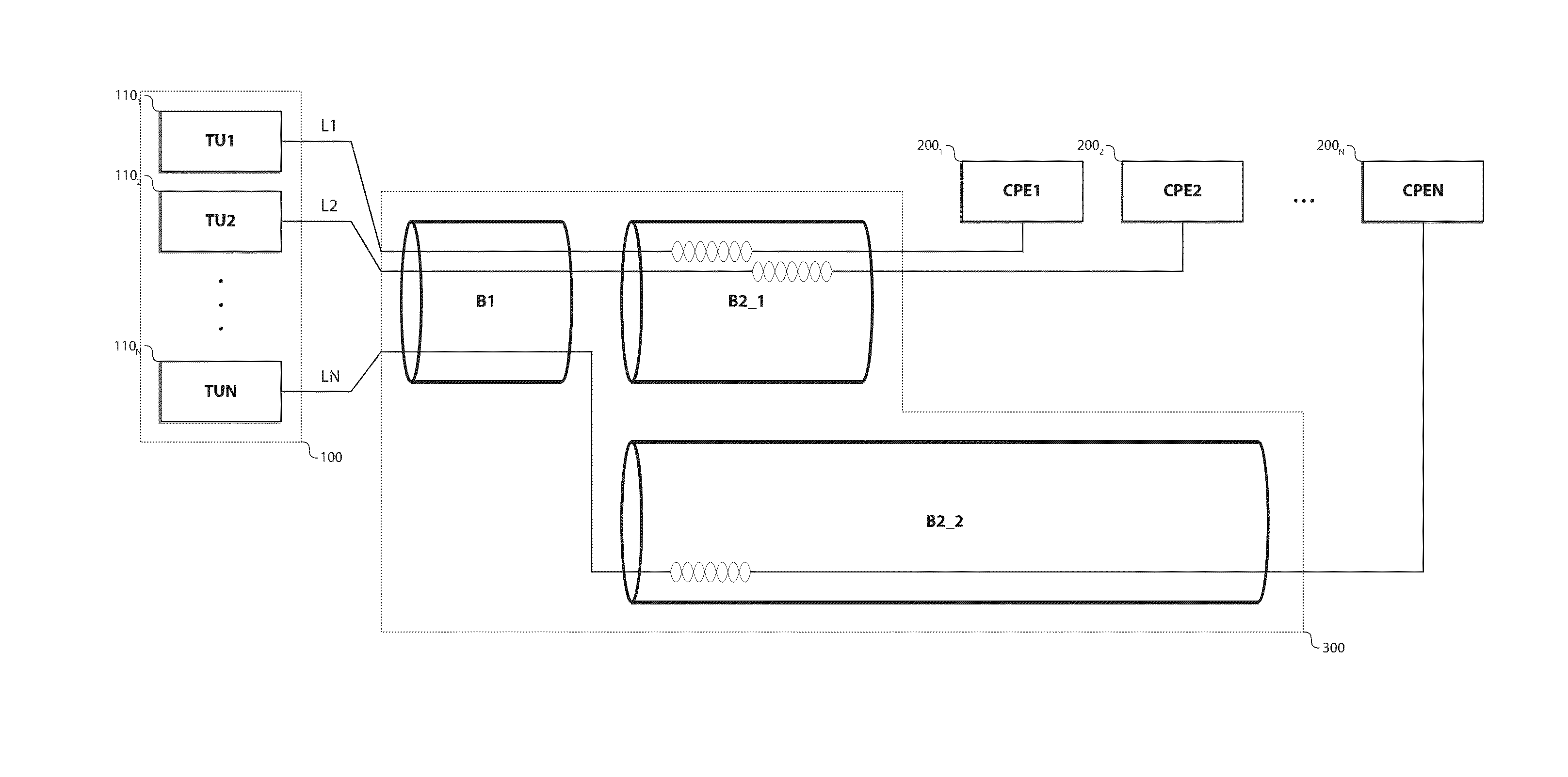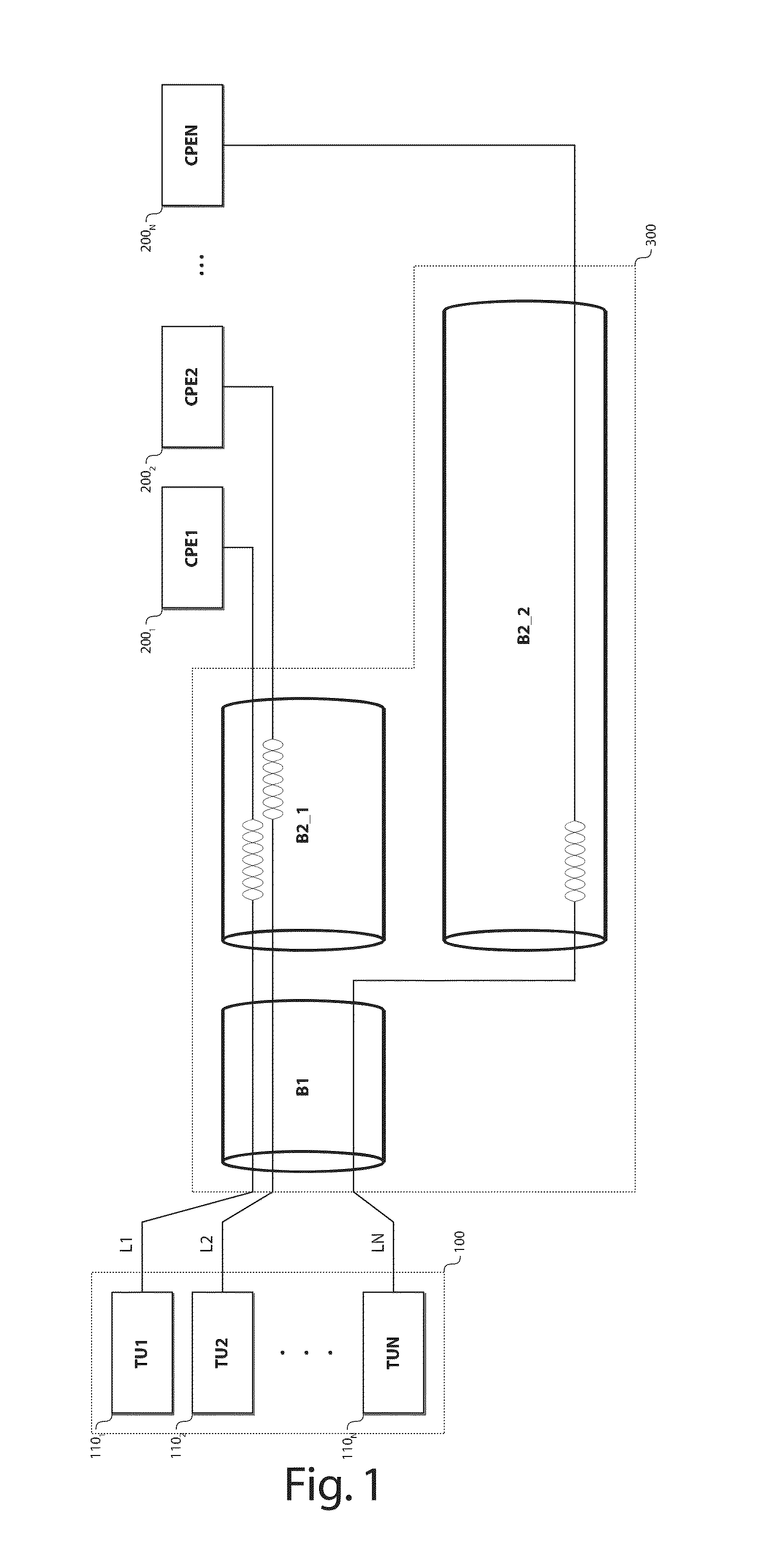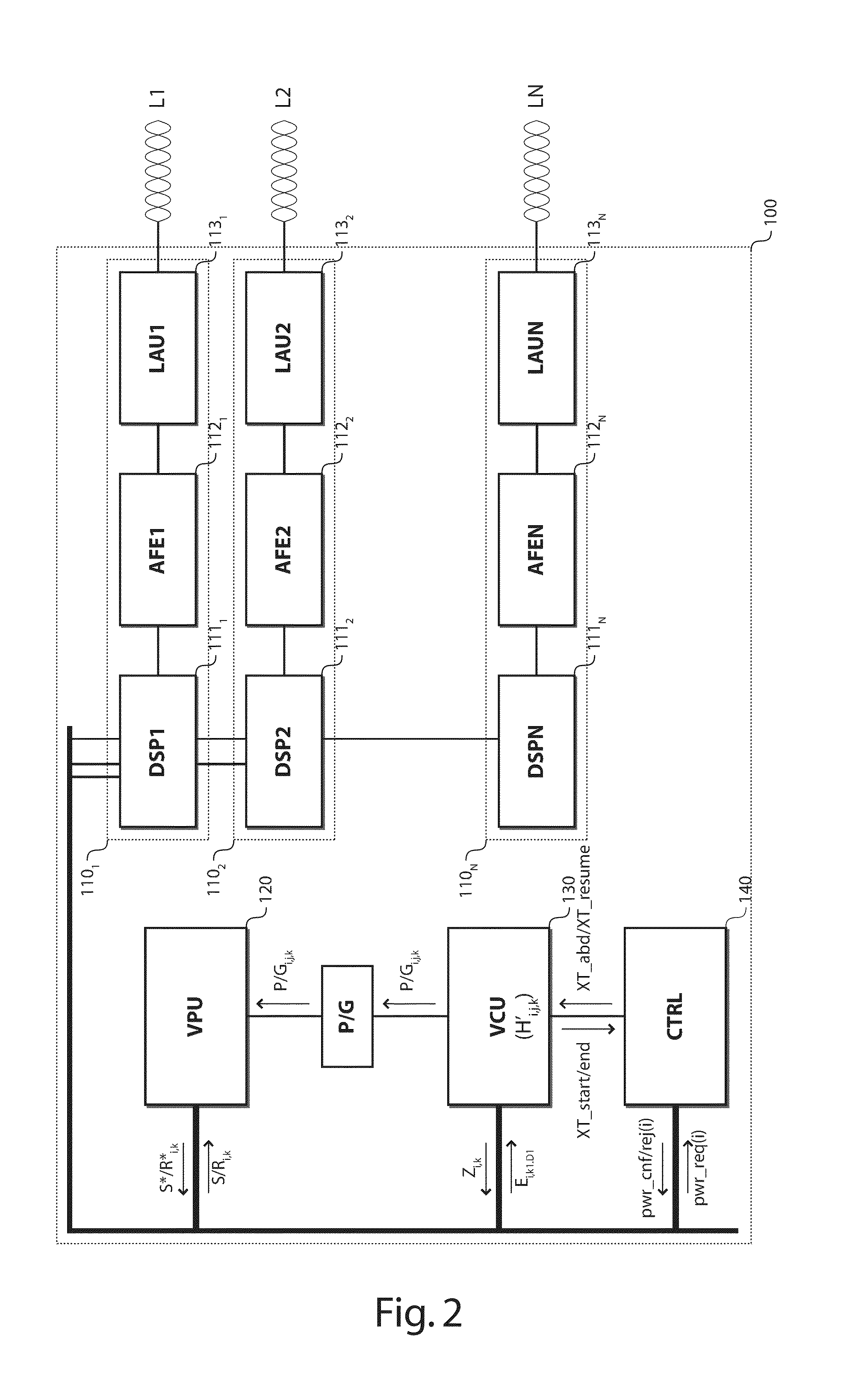Power adaptation avoidance during crosstalk measurements
a power adaptation and crosstalk technology, applied in the field of access nodes, can solve the problems of limited crosstalk cancellation performance, line is unable to adapt itself, risk of errors, etc., and achieve the effect of improving crosstalk estimation and vectoring performance and ensuring line stability
- Summary
- Abstract
- Description
- Claims
- Application Information
AI Technical Summary
Benefits of technology
Problems solved by technology
Method used
Image
Examples
Embodiment Construction
[0060]There is seen in FIG. 1 a DSL communication system 1 for providing broadband access to subscribers.
[0061]The DSL communication system 1 comprises a loop plant 300, a DSLAM 100 and N CPEs 2001 to 200N (or CPE1 to CPEN). The DSLAM 100 comprises N transceivers 1101 to 110N (or TU1 to TUN) coupled via N subscriber lines L1 to LN to respective ones of the N CPEs 2001 to 200N. The subscriber lines L1 to LN are for example Unshielded Twisted Pairs (UTP).
[0062]The subscriber lines L1 to LN are bundled together within one or more binders B1, B2—1 and B2—2, and induce crosstalk into each other as they are in close vicinity over whole or part of their length. The subscriber lines L1 to LN are assumed to form part of the same vectoring group.
[0063]Because downstream and upstream communications are assigned different and non-overlapping frequency bands—Frequency Division Duplexing (FDD)—, crosstalk mostly reduces to Far-End Crosstalk (FEXT): some substantial amount of the signal transmitte...
PUM
 Login to View More
Login to View More Abstract
Description
Claims
Application Information
 Login to View More
Login to View More - R&D
- Intellectual Property
- Life Sciences
- Materials
- Tech Scout
- Unparalleled Data Quality
- Higher Quality Content
- 60% Fewer Hallucinations
Browse by: Latest US Patents, China's latest patents, Technical Efficacy Thesaurus, Application Domain, Technology Topic, Popular Technical Reports.
© 2025 PatSnap. All rights reserved.Legal|Privacy policy|Modern Slavery Act Transparency Statement|Sitemap|About US| Contact US: help@patsnap.com



